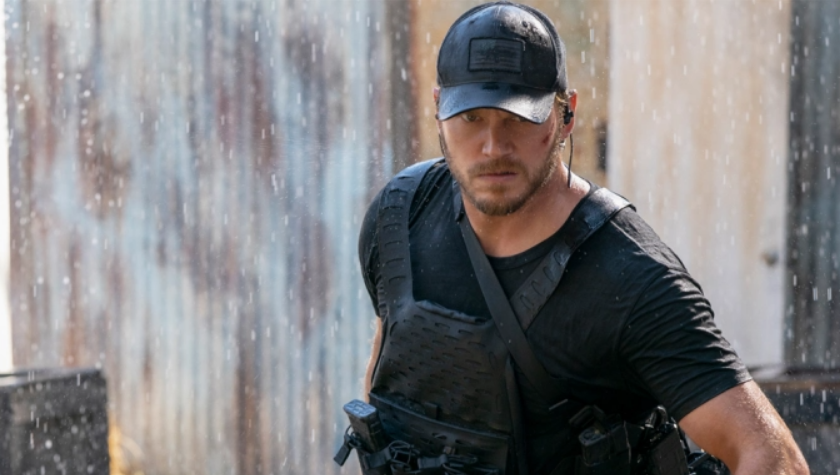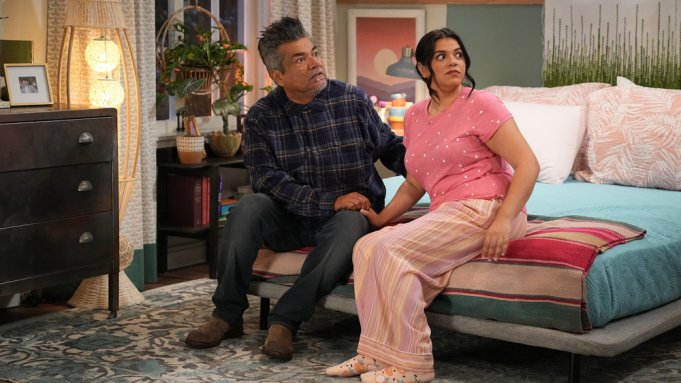Take 5: ‘She Said’ shows how two reporters started a movement
November 27, 2022
What does it take to break a story? In the film She Said, two journalists at the New York Times take on the challenge of exposing systemic sexual assault in Hollywood by going after the notorious producer Harvey Weinstein. Based on the article by reporters Megan Twohey and Jodi Kantor, the film goes behind the scenes of how the two broke the story that helped ignite a movement and brought the horrors of an industry to light.
Here are five screenwriting takeaways you can learn from She Said.
- Journalism movie tropes
Movies about the media have been around for decades. Citizen Kane is considered one of the best films ever made and it follows a newspaper magnate’s ascent to power. True stories about journalists uncovering ground-breaking stories that potentially change the world are intriguing because it gives the viewer a glimpse into the details on how they brought the story to life.
From All the President’s Men to She Said, there are tropes that these movies have that you can carry into your own writing whether creating a fictional tale or basing it off of real life.
One is the discovery of the story. Every journalist has to come across the story they want to cover. Sometimes they get assigned to it, like in All the President’s Men, when Bob Woodward (Robert Redford) covers a courtroom hearing, which leads to his and Carl Bernstein (Dustin Hoffman) following the leads to the Watergate scandal. Other times, they happen upon it, like in She Said when Kantor (Zoe Kazan) decides to write a story about sexual harassment in the workplace and her finding out about Weinstein’s actions.
Another trope is the constant reveal of something that’s nearly unbelievable. From the famous people who were harassed or assaulted, and whose careers were tarnished, to the methods in which the acts occurred, the reporters in She Said are constantly finding new and damning evidence. Each piece makes the story worse than they initially thought and therefore increases their desire to ensure it gets told. In Spotlight, it’s not just the revelation of the sexual abuses in the Catholic Church but the extent of concealing the problem that escalates the horror.
Finally, a journalism trope often includes a David vs. Goliath tale. From Erin Brockovich (which is a legal drama) to She Said, the stories revolve around those with little power taking on those with a lot of it.
- What are the stakes?
When the film begins in the modern day, Twohey is wrapping up a piece for the New York Times about then-candidate Donald Trump and the women accusing him of sexual abuse. The consequences of taking on a powerful figure are revealed through a harassment of a source, who receives a package full of feces delivered to her house, and Twohey herself who gets threatening phone calls. As the film examines the women in Weinstein’s life, the audience learns the consequences the women faced by both rejecting his advances, facing the abuse or telling what happened.
She Said is based on a true story but it also shows ways you can up the stakes in your own story and how upending someone’s life can indicate the severity of the situation and the type of danger your protagonist is in.
- Uncovering a mystery
From cop shows to the noir detective thrillers, people love watching a mystery unfold. It’s a widely known story of the fate of Harvey Weinstein. But how the journalists found out the information that became the story is part of the mystery we want to see.
Journalism is quite similar to a detective story. Each one involves interviewing people, gathering information and putting pieces together that provides a full picture.
There are many things writers can takeaway from the way She Said uncovers the mystery. For instance, setting up red herrings to throw your protagonist off the track, coming across people who provide clues and brainstorming with colleagues to connect the dots.
- Building fear in characters
It’s possible to consider that in decades from now, the name Harvey Weinstein won’t invoke any particular feelings to the average person. For those who watch this movie in the future will be able to understand the level of power and fear he commanded. The audience never sees Weinstein’s face but when Twohey and Kantor approach potential witnesses or victims, the mere statement “I’m here to talk to you about your time at Miramax” incites an immediate change in their demeanor from a current state to dread and anxiety.
The viewer doesn’t have to see the crimes he committed or threats he or his team made, we see it in the reactions. This forces the viewer to use their imagination, which is often scarier than portraying it on the screen. Sometimes the best way to maximize the power of the villain is by seeing the fear in those who have been near them – it’s not unlike Jaws, in which we don’t see the shark for most of the movie, yet we’re terrified of it.
- Minimal character arcs are okay
How have your characters evolved from the beginning of the story to the last scene? In some cases, they go through monumental changes like Ebenezer Scrooge in A Christmas Carol. Other times it’s more subtle like Indiana Jones. The two main characters in She Said don’t have a real distinguishable character arc. At the beginning, both are determined New York Times reporters eager to find the next story to investigate, which is who they are at the end of the film.
While they learn quite a bit about the systemic sexual assault in Hollywood and its impact on dozens of women they speak to throughout the course of the investigation, they are very much the same at the end of the movie as they were at the beginning.
The arc your character goes through is dependent on the journey and where they start when the story begins. Not every movie needs a protagonist going through a life-changing set of circumstances, sometimes the ride is the story and not the character’s journey.
She Said stars Carey Mulligan and Zoe Kazan, was written by Rebecca Lenkiewicz based on the New York Times investigation by Jodi Kantor, Megan Twohey, Rebecca Corbett, and directed by Maria Schrader.
She Said is currently playing in theaters.
Written by: Steven Hartman
Steven Hartman is an award-winning, optioned screenwriter. He was a Top 5 Finalist in Big Break’s Historical Category in 2019 and won Best Action/Adventure in Script Summit’s Screenplay Competition in 2021. He holds a Bachelor of Arts degree from Columbia College and had internships at Jerry Bruckheimer Films and Village Roadshow Pictures. Steve is a full-time writer and creative video producer by day and a screenwriter and novelist by night.- Topics:
- Screenwriting & Craft




